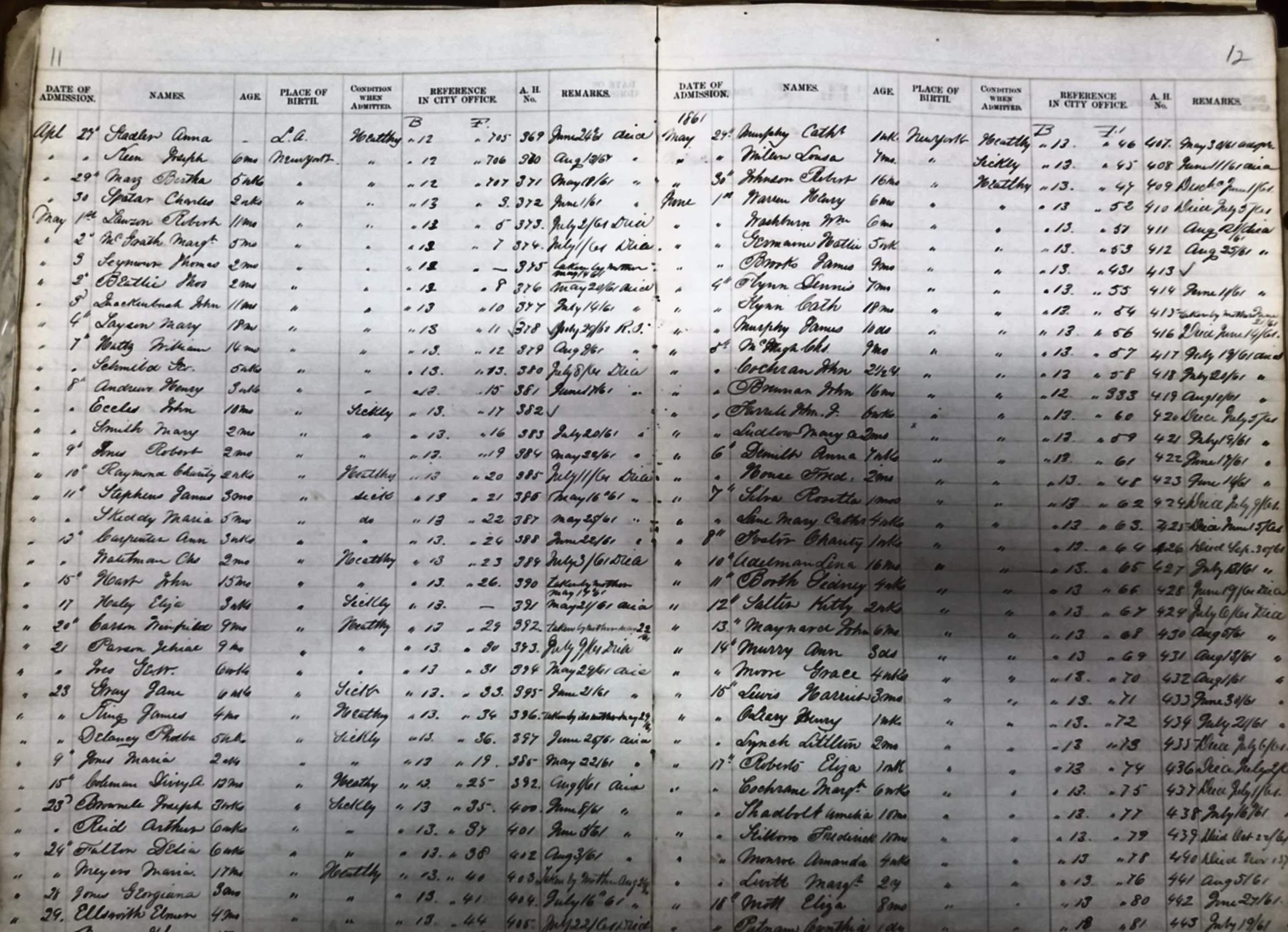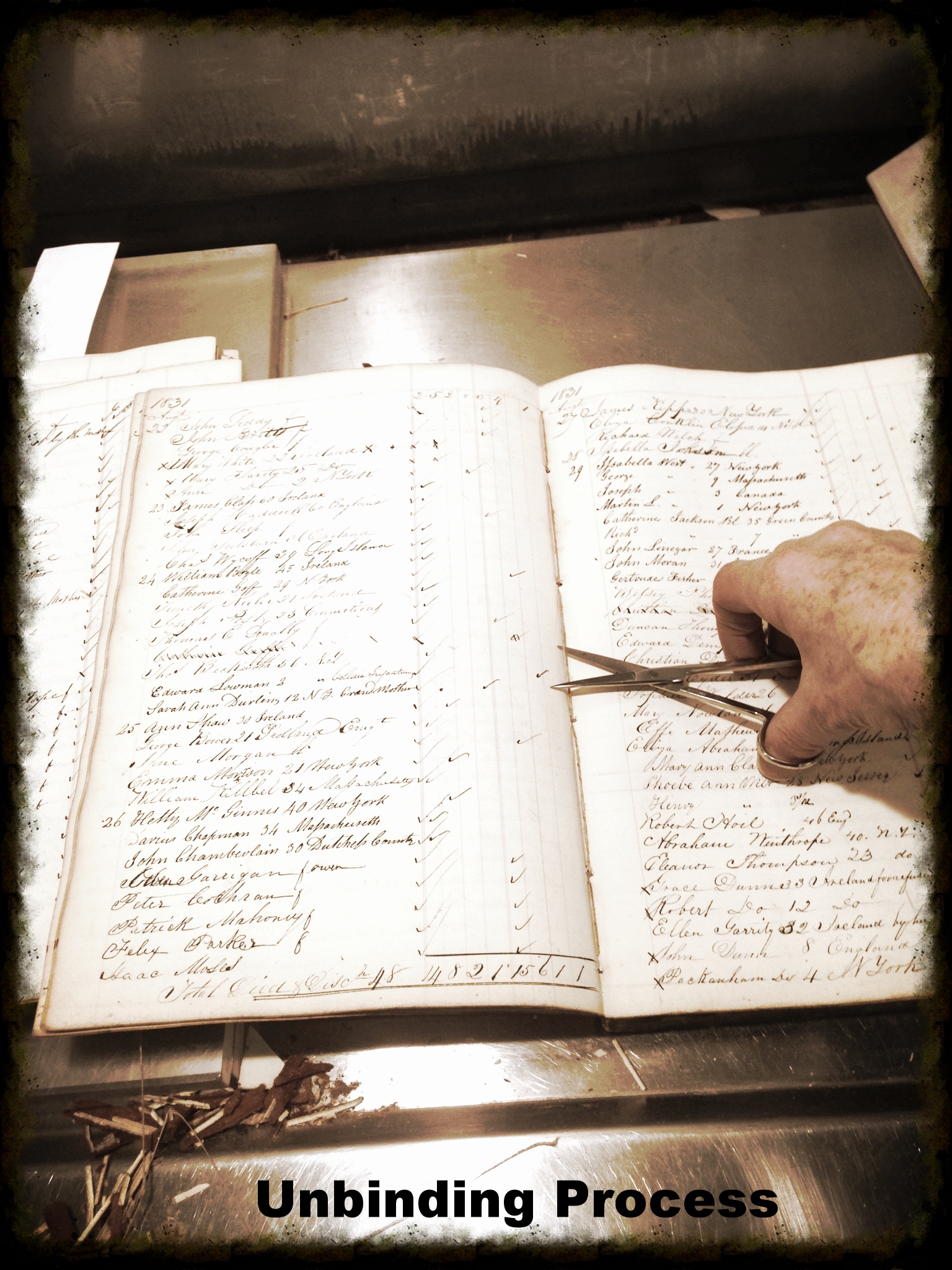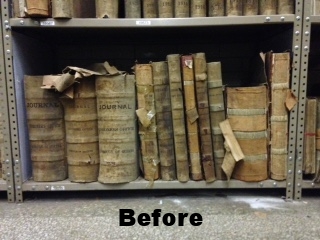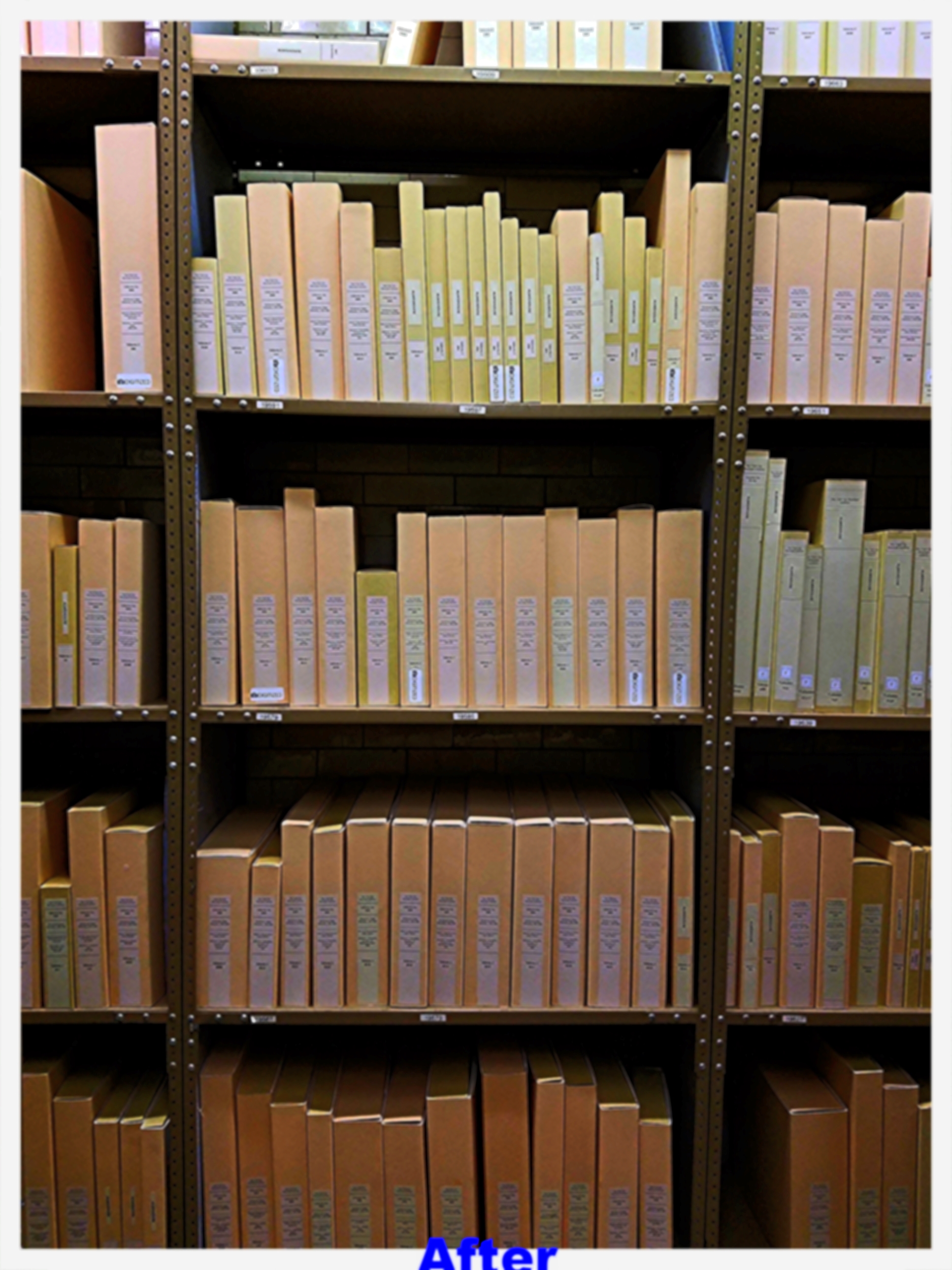In October 2015, under a grant generously funded by the National Historical Publications and Records Commission, the New York City Municipal Archives embarked upon a large and exciting new project: processing, preserving and cataloging the Almshouse Ledger Collection. This historic collection contains over 400 handwritten volumes pertaining to city-run institutions including the Almshouses, Workhouses, Lunatic Asylum, Penitentiary and various hospitals, which all found their home on Blackwell’s Island, now Roosevelt Island. The span covers the years 1758-1952. This important project will ensure that the Almshouse Ledgers are preserved for future generations of researchers, scholars, genealogists, educators and anyone interested in social, cultural and medical histories during this period of great change and growth in New York City.
A Brief History of the Almshouse:
New York City’s Almshouse history dates back to the colonial era, when poverty and regular outbreaks of measles and smallpox overtook its streets. Greater care and responsibility of the city’s poor and sick, along with their dependents, was needed. In 1736, the city took over as official caregivers to these populations and absorbed the workhouses of New York into its activities. Prior to this time, the church had taken care of New York City’s poor and destitute. The first Almshouse was opened on the Commons of the City in 1736 and fell under the care and control of the Overseers of the Poor, House of Correction, Workhouse and Poorhouse, headed by two men appointed by the Office of the Mayor. Broadly referred to as Almshouses, these establishments included workhouses, soldiers’ barracks, hospitals, penitentiaries and asylums. By 1845 all these institutions were housed on Blackwell's Island, which today we know as Roosevelt Island.
Incurables Hospital Admissions Ledger
As overcrowding, disease, malnutrition and crime became rampant in the Almshouses, they became synonymous with the very worst of New York City. Many city departments were formed to improve and oversee conditions in the Almshouses, Workhouse, Poorhouse, Lunatic Asylum and hospitals on the island only to be disbanded, re-organized or taken over by other agencies.
1862 Almshouse Discharge Ledger
The ledger-style admissions, discharges and deaths and census books in the collection record the names of people who were confined (voluntarily or otherwise) in the various facilities on Blackwell’s Island. Many volumes contain detailed information regarding age, gender, disease, date of admission, discharge and/or death. While overwhelmingly male dominated, women, and children to a lesser extent, are well-represented in these books during the years 1822-1860. With few opportunities for employment outside the home, a widow or unmarried woman without family support was often forced to turn to the city for help. Many women brought their children with them, or had their babies in the institution. Women who were unable to nurse their own children were assigned a wet nurse who was paid by the department overseeing the institution. A large number of the assigned wet nurses were inmates from one of the island's institutions. Many mother-child pairs are noted in the children’s registers.
1864-1873 Certificates of Death
1927 Neurological and Cancer Hospital Admissions and Census Ledger
Bond, Hospital and Stock ledgers contain valuable information about the inmates, patients and employees of Blackwell's Island institutions, including name, age, nativity, child parentage (if known), when they arrived in New York and their port of origin. The type of food, beverages and supplies needed to run such overcrowded and busy facilities are also well documented, as are the needs of the staff of the institutions. Ledgers containing death certificates offer types of illnesses patients suffered succumbed to, while hospital ledgers include information on illnesses suffered from. Some ledgers offer details about the patients themselves. Census Ledgers provide the most detailed information about the various facilities with numbers being taken on a daily basis.
"You are in a public institution now, and you can't expect to get anything. This is charity, and you should be thankful for what you get."
"But the city pays to keep these places up," I urged, "and pays people to be kind to the unfortunates brought here."
"Well, you don't need to expect any kindness here, for you won't get it," she said, and she went out and closed the door."
Nellie Bly, Ten Days in a Madhouse
1815-1827 Bond Ledger





